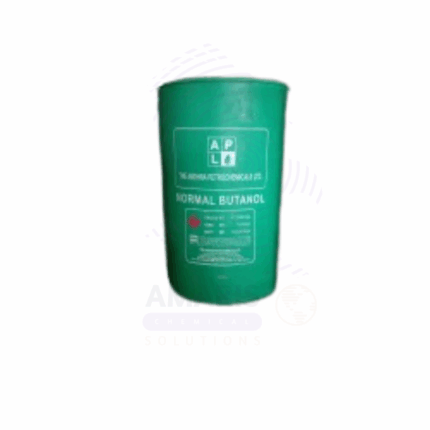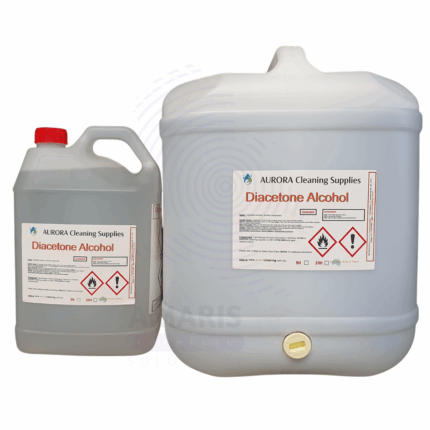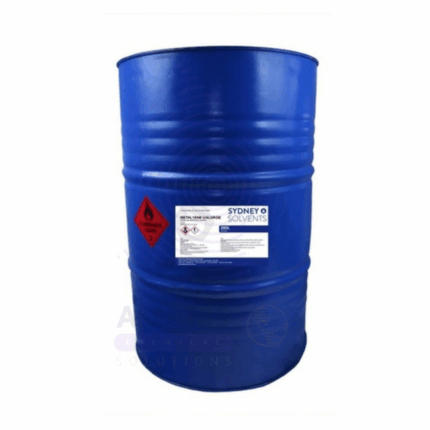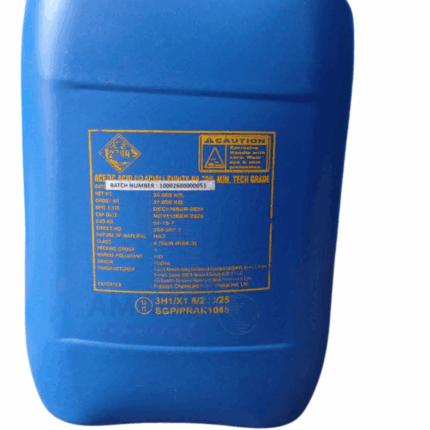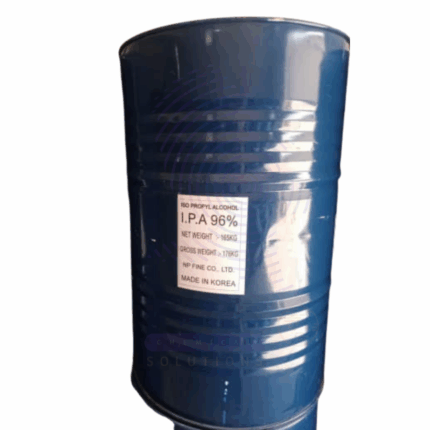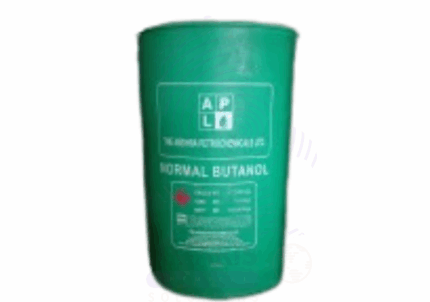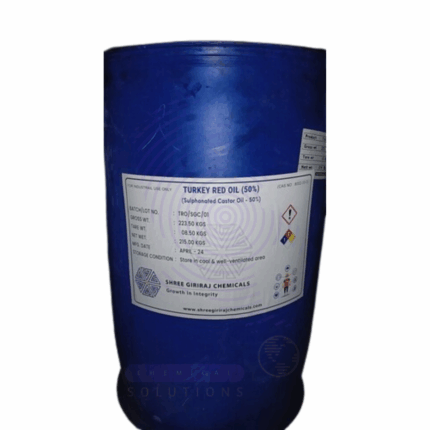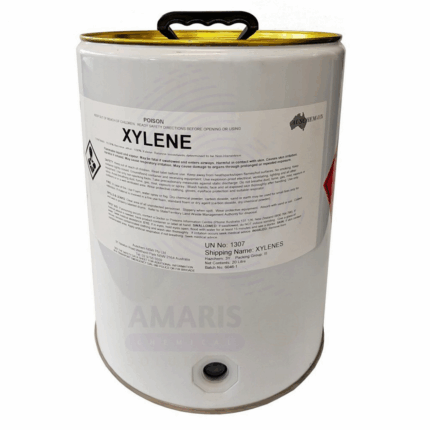
Electrode Zinc Rod
$ 32.60 Original price was: $ 32.60.$ 32.54Current price is: $ 32.54.

Enamelled Copper Round Winding Wire
$ 34.75 Original price was: $ 34.75.$ 34.67Current price is: $ 34.67.
Toluene
Whatsapp Order
Toluene is a clear, colorless aromatic hydrocarbon solvent with a distinct sweet odor. It is widely used as an industrial solvent and chemical feedstock due to its excellent solvency, volatility, and chemical stability. Toluene plays a critical role in the production of paints, coatings, adhesives, rubber, and various chemicals. It is also used as a fuel additive and in the manufacture of explosives and pharmaceuticals. Its versatility makes it a cornerstone in multiple industrial sectors.
Categories: Solvents (Cleaning), Solvents(paint)
Tags: Aromatic Hydrocarbon, Chemical Intermediate, Industrial solvent, Methylbenzene, Toluene
Description
Table of Contents
Toggle
Toluene
Primary Uses
- Chemical Industry
- Solvent: Used extensively as a solvent in paints, coatings, adhesives, inks, and cleaning agents.
- Chemical Intermediate: Feedstock for producing benzene, benzoic acid, benzyl chloride, and other aromatic chemicals.
- Production of Toluene Diisocyanate (TDI): Key raw material in polyurethane foam manufacture.
- Manufacture of Explosives: Used in production of trinitrotoluene (TNT).
- Paints and Coatings Industry
- Thinner and Diluent: Facilitates application and drying of paints and varnishes.
- Degreasing Agent: Used to clean surfaces before painting.
- Rubber Industry
- Rubber Solvent: Used to dissolve and process natural and synthetic rubber.
- Adhesive Production: Key ingredient in rubber-based adhesives.
Secondary Uses
- Fuel Industry
- Octane Booster: Added to gasoline to improve combustion efficiency and reduce engine knocking.
- Aviation Fuel Component: Used in jet fuels as a component to enhance performance.
- Pharmaceutical Industry
- Intermediate in Drug Synthesis: Used as a solvent or reagent in various pharmaceutical manufacturing processes.
- Laboratory Use
- Extraction Solvent: Employed in analytical and preparative chemistry for extraction and purification processes.
- Printing Industry
- Ink Solvent: Used in printing inks to improve flow and drying.
- Adhesives and Sealants
- Solvent Carrier: Enhances formulation and application of adhesives and sealants.
KEY PRODUCT FEATURES
1. Basic Identification Attributes
- Chemical Name (IUPAC): Methylbenzene
- Common/Trade Name: Toluene
- CAS Number: 108-88-3
- HS Code: 2902.30.00
- Synonyms: Methylbenzene, Phenylmethane
2. Physical & Chemical Properties
- Physical State: Clear, colorless liquid
- Color & Odor: Colorless; sweet, aromatic odor
- Boiling Point: 110.6 °C
- Melting Point: -95 °C
- Density: 0.8669 g/cm³ at 20 °C
- Flash Point: 4 °C (closed cup)
- Solubility: Insoluble in water; miscible with organic solvents like alcohol, ether, acetone
- Vapor Pressure: 28 mm Hg at 25 °C
- Refractive Index: 1.496 at 20 °C
3. Safety & Hazard Attributes
- GHS Classification:
- Flammable liquid (Category 2)
- Specific target organ toxicity — single exposure (Category 3, narcotic effects)
- Toxicity: Moderate toxicity via inhalation, ingestion, and skin absorption; can affect central nervous system.
- Exposure Limits:
- OSHA PEL: 200 ppm (8-hour TWA)
- ACGIH TLV: 20 ppm (8-hour TWA)
4. Storage & Handling Attributes
- Storage Conditions: Store in tightly closed containers in a cool, well-ventilated area away from sources of ignition and incompatible materials.
- Container Type: Steel drums, bulk tanks, or suitable solvent containers.
- Shelf Life: Stable under recommended storage conditions for several years.
- Handling Precautions: Use explosion-proof equipment; avoid inhalation and skin contact; ensure grounding to prevent static discharge.
5. Regulatory & Compliance Attributes
- Complies with REACH, TSCA, OSHA, and GHS requirements.
- Listed on major chemical inventories worldwide.
- Classified and labeled according to international transport regulations (UN 1294).
- Subject to environmental regulations due to VOC content.
6. Environmental & Health Impact
- Biodegradability: Readily biodegradable under aerobic conditions.
- Ecotoxicity: Toxic to aquatic organisms; avoid environmental discharge.
- Bioaccumulation: Low potential.
- Environmental Fate: Volatile and may contribute to air pollution and smog formation.
SAFETY HANDLING PRECAUTIONS
Safety Handling Precautions
- PPE Required: Flame-resistant gloves, goggles, and respirators in poorly ventilated areas.
- Handling Guidelines: Avoid ignition sources; use in well-ventilated areas or fume hoods.
- Storage Measures: Ground and bond containers during transfer; store away from oxidizers.
First Aid Measures
- Inhalation: Move to fresh air immediately; seek medical attention if symptoms like dizziness or headache persist.
- Skin Contact: Wash thoroughly with soap and water; remove contaminated clothing.
- Eye Contact: Rinse eyes with water for at least 15 minutes; seek medical help if irritation continues.
- Ingestion: Do not induce vomiting; seek immediate medical attention.
Firefighting Measures
- Fire Hazards: Highly flammable liquid and vapor; vapors can form explosive mixtures with air.
- Extinguishing Media: Use alcohol-resistant foam, dry chemical powder, CO₂, or water spray.
- Hazardous Combustion Products: Carbon oxides, benzene, and other toxic fumes.
Related products
Butanol
Butanol (also known as n-Butanol or Normal Butanol) is a clear, colorless liquid with a mild, alcoholic odor. It is a four-carbon primary alcohol with the chemical formula C4H10O. Butanol is moderately soluble in water and miscible with many organic solvents. Its physical and chemical properties make it a versatile solvent and chemical intermediate. Butanol indicates a high purity grade often used in industrial, pharmaceutical, and chemical synthesis applications.
Di Acetone Alcohol
Di Acetone Alcohol (chemical name: 4-Hydroxy-4-methylpentan-2-one) is a clear, colorless to pale yellow liquid with a mild acetone-like odor. It is a versatile organic solvent and intermediate widely used in the manufacture of coatings, adhesives, inks, and specialty chemicals. Di Acetone Alcohol exhibits excellent solvency for resins, oils, and fats, combined with moderate evaporation rate and low volatility compared to acetone, making it suitable for controlled drying applications. It also serves as a chemical intermediate in synthesis reactions and as a component in solvent blends to optimize performance and drying characteristics.
Dichloromethane
$ 2.21
Dichloromethane, also known as methylene chloride, is a volatile, colorless liquid with a sweet, chloroform-like odor. It is a chlorinated solvent widely used in industrial, pharmaceutical, and laboratory applications due to its excellent solvent properties, including high volatility, moderate polarity, and low boiling point (about 39.6°C). DCM is prized for its ability to dissolve a wide range of organic compounds, making it ideal for extraction, paint stripping, degreasing, and chemical processing. However, due to health and environmental concerns, its use is regulated and controlled in many countries.
Glacial Acetic Acid Tech grade
Glacial Acetic Acid Tech grade is a clear, colorless liquid with a pungent vinegar-like odor. It is a less refined form of acetic acid primarily used for industrial and technical applications rather than food or pharmaceutical uses. Typically available in concentrations ranging from 80% to glacial (99-100%), it serves as a crucial chemical reagent, solvent, and intermediate in various industrial processes.
Isopropyl Alcohol Tech Grade
Isopropyl Alcohol Tech Grade is a colorless, flammable liquid with a strong, characteristic alcohol odor. It is a solution containing approximately 85% isopropanol by volume, with the remainder primarily water. This technical-grade IPA is widely used as a solvent, disinfectant, and cleaning agent in industrial, pharmaceutical, and household applications. The 85% concentration balances efficacy with safety and evaporation rate, making it versatile for various uses.
N-Butanol
N-Butanol (1-butanol) is a four-carbon linear alcohol with the chemical formula C₄H₉OH. It is a colorless, flammable liquid with a mild, alcoholic odor. N-Butanol is widely used as a solvent in paints, coatings, adhesives, and chemical synthesis. It serves as an intermediate in the manufacture of plasticizers, butyl acrylate, and other chemicals. Its moderate volatility and solvent properties make it valuable in industrial and commercial applications.
Turkey Red Oil (Sulphated Castor Oil)
Turkey Red Oil (Sulphated Castor Oil), also known as Sulphated Castor Oil, is a water-soluble derivative of castor oil produced by the sulfonation of castor oil. It appears as a viscous, amber to dark brown liquid with excellent emulsifying, detergent, and wetting properties. Turkey Red Oil is widely used as a natural surfactant and emulsifier in various industrial and personal care applications. It is known for its biodegradability, mildness, and ability to stabilize oil-in-water emulsions. Traditionally used in textile processing as a softener and lubricant, it now finds broad usage in cosmetics, detergents, leather processing, and cleaning products due to its unique functional attributes.
Xylene
Xylene is a clear, colorless, flammable aromatic hydrocarbon solvent consisting of three isomers: ortho-, meta-, and para-xylene. It is widely utilized in various industries for its excellent solvency, chemical stability, and moderate evaporation rate. Xylene serves as a key raw material in chemical manufacturing and an effective solvent in coatings, adhesives, inks, and cleaning applications.


 Preservatives(food)
Preservatives(food) Flavor Enhancers
Flavor Enhancers Acidulants
Acidulants Sweeteners
Sweeteners Antioxidants
Antioxidants Colorants(food)
Colorants(food) Nutraceutical Ingredients (food)
Nutraceutical Ingredients (food) Nutrient Supplements
Nutrient Supplements Emulsifiers
Emulsifiers
 Collectors
Collectors Dust Suppressants
Dust Suppressants Explosives and Blasting Agents
Explosives and Blasting Agents Flocculants and Coagulants
Flocculants and Coagulants Frothers
Frothers Leaching Agents
Leaching Agents pH Modifiers
pH Modifiers Precious Metal Extraction Agents
Precious Metal Extraction Agents
 Antioxidants(plastic)
Antioxidants(plastic) Colorants (Pigments, Dyes)
Colorants (Pigments, Dyes) Fillers and Reinforcements
Fillers and Reinforcements Flame Retardants
Flame Retardants Monomers
Monomers Plasticizers
Plasticizers Polymerization Initiators
Polymerization Initiators Stabilizers (UV, Heat)
Stabilizers (UV, Heat)
 Antifoaming Agents
Antifoaming Agents Chelating Agents
Chelating Agents Coagulants and Flocculants
Coagulants and Flocculants Corrosion Inhibitors
Corrosion Inhibitors Disinfectants and Biocides
Disinfectants and Biocides Oxidizing Agents
Oxidizing Agents pH Adjusters
pH Adjusters Scale Inhibitors( water)
Scale Inhibitors( water)
 Antioxidants(cosmetic)
Antioxidants(cosmetic) Emollients
Emollients Fragrances and Essential Oils
Fragrances and Essential Oils Humectants
Humectants Preservatives
Preservatives Surfactants(cosmetic)
Surfactants(cosmetic) Thickeners
Thickeners UV Filters
UV Filters
 Fertilizers
Fertilizers Soil Conditioners
Soil Conditioners Plant Growth Regulators
Plant Growth Regulators Animal Feed Additives
Animal Feed Additives Biostimulants
Biostimulants Pesticides (Herbicides, Insecticides, Fungicides)
Pesticides (Herbicides, Insecticides, Fungicides)
 Active Pharmaceutical Ingredients (APIs)
Active Pharmaceutical Ingredients (APIs) Excipients
Excipients Solvents(pharmaceutical)
Solvents(pharmaceutical) Antibiotics
Antibiotics Antiseptics and Disinfectants
Antiseptics and Disinfectants Vaccine Adjuvants
Vaccine Adjuvants Nutraceutical Ingredients (pharmaceutical)
Nutraceutical Ingredients (pharmaceutical) Analgesics & Antipyretics
Analgesics & Antipyretics
 Analytical Reagents
Analytical Reagents Solvents(lab)
Solvents(lab) Chromatography Chemicals
Chromatography Chemicals Spectroscopy Reagents
Spectroscopy Reagents microbiology-and-cell-culture-reagents
microbiology-and-cell-culture-reagents Molecular Biology Reagents
Molecular Biology Reagents Biochemical Reagents
Biochemical Reagents Inorganic and Organic Standards
Inorganic and Organic Standards Laboratory Safety Chemicals
Laboratory Safety Chemicals Specialty Laboratory Chemicals(Special Laboratory Equipment)
Specialty Laboratory Chemicals(Special Laboratory Equipment)
 Demulsifiers
Demulsifiers Hydraulic Fracturing Fluids
Hydraulic Fracturing Fluids Scale Inhibitors(oil)
Scale Inhibitors(oil) Surfactants(oil)
Surfactants(oil) Drilling Fluids
Drilling Fluids
 Dyes and Pigments
Dyes and Pigments Bleaching Agents
Bleaching Agents Softening Agents
Softening Agents Finishing Agents
Finishing Agents Antistatic Agents
Antistatic Agents
 Admixtures
Admixtures Waterproofing Agents
Waterproofing Agents Sealants and Adhesives
Sealants and Adhesives Curing Compounds
Curing Compounds Concrete Repair Chemicals
Concrete Repair Chemicals Anti-Corrosion Coatings
Anti-Corrosion Coatings
 Surfactants(cleaning)
Surfactants(cleaning) Builders
Builders Enzymes
Enzymes Solvents (Cleaning)
Solvents (Cleaning) Fragrances
Fragrances
 Electronic Chemicals
Electronic Chemicals Catalysts
Catalysts Lubricants
Lubricants Photographic Chemicals
Photographic Chemicals Refrigerants
Refrigerants Automotive chemicals
Automotive chemicals Pyrotechnic Chemicals
Pyrotechnic Chemicals
 Biodegradable Surfactants
Biodegradable Surfactants Bio-based Solvents
Bio-based Solvents Renewable Polymers
Renewable Polymers Carbon Capture Chemicals
Carbon Capture Chemicals Wastewater Treatment Chemicals
Wastewater Treatment Chemicals
 Pigments
Pigments Solvents(paint)
Solvents(paint) Specialty Coatings
Specialty Coatings Binders/Resins
Binders/Resins Additives
Additives Driers
Driers Anti-Corrosion Agents
Anti-Corrosion Agents Functional Coatings
Functional Coatings Application-Specific Coatings
Application-Specific Coatings
 Fresh Herbs
Fresh Herbs Ground Spices
Ground Spices Whole Spices
Whole Spices Spice Blends
Spice Blends Dried Herbs
Dried Herbs
 Leavening Agents
Leavening Agents Dough Conditioners
Dough Conditioners Flour Treatments
Flour Treatments Fat Replacers
Fat Replacers Decoratives
Decoratives Preservatives(baking)
Preservatives(baking)
 Plasticizers & Softeners
Plasticizers & Softeners Reinforcing Agents
Reinforcing Agents Adhesion Promoters
Adhesion Promoters Vulcanizing Agents
Vulcanizing Agents Antidegradants
Antidegradants Blowing Agents
Blowing Agents Fillers & Extenders
Fillers & Extenders Accelerators & Retarders
Accelerators & Retarders

